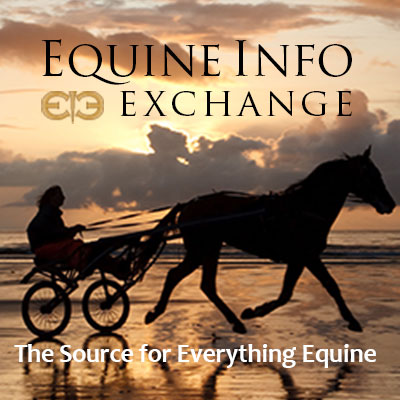Riding Disciplines
Welcome to Riding Disciplines which covers every English and Western riding style! The English riding covers Dressage, a ballet on horseback, Driving which features both the beautiful horses and the carriages they pull, Foxhunting, Eventing, Jumping, Saddle Seat, and even the sport of Polo.
The Western riding category includes Pleasure, Reining and all Rodeo events involving a horse, so look for Barrel Racing, Bronc Riding, Chuck Wagon Racing, Cutting, Pole Bending and Roping.
Want to know the date of your favorite horse show or rodeo? Don’t miss it! Dates and locations are included in the in both the Calendar of Events for English Riding and the Calendar of Events for Western Riding. Are we missing a category or event? Please use the useful feedback link and let us know!
Safely Saddling a Horse with a Western Saddle by Certified Horsemanship Association (CHA) This educational and safety video is brought to you by the Certified Horsemanship Association (CHA)
For more information on the largest certifying body of riding instructors and barn managers in North America, Certified Horsemanship Association, please visit www.CHA.horse. To find a certified equine professional or accredited equine facility near you, visit www.CHA.horse
Read more: Safely Saddling Western with Julie Goodnight (8:10)
Julie Goodnight shows you the basic gaits and footfalls of the horse and how they apply to your riding.
For more information on the largest certifying body of riding instructors and barn managers in North America, Certified Horsemanship Association, please visit www.CHA.horse. To find a certified equine professional or accredited equine facility near you, visit www.CHA.horse
Read more: Gaits and Footfalls of the Horse with Julie Goodnight (9:58)
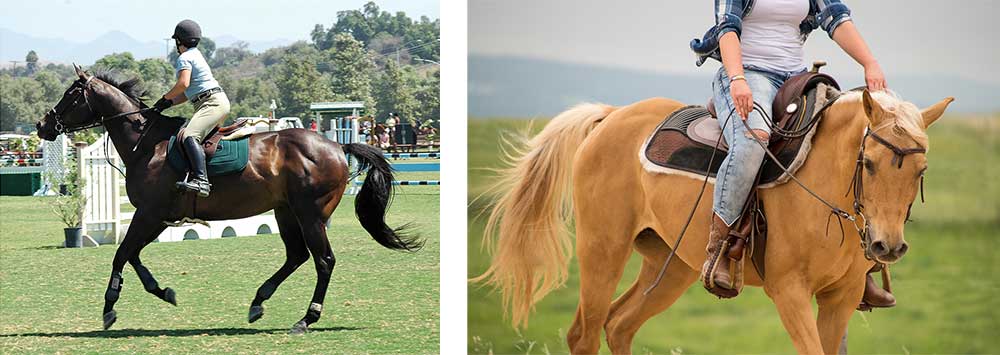
By the EIE Editorial Staff
English riding is often associated with disciplines like dressage, show jumping, and eventing. It emphasizes precision, balance, and close communication between rider and horse. The English saddle is smaller and lighter, allowing for more direct contact with the horse.
Western riding is typically associated with activities like trail riding, cattle work, and rodeo events. It emphasizes comfort, stability, and control. The Western saddle is larger and has a deep seat, providing more support for long rides.
Here are some factors to consider when choosing between the two:
- Your goals: Are you interested in competitive riding, trail riding, or simply enjoying the companionship of a horse?
- Your comfort: Do you prefer the feel of an English or Western saddle?
- Your location: Western riding is more common in certain regions, while English riding is more prevalent in others.
- Your horse's breed and training: Some horses may be better suited to one style over the other.
But wait, there’s more! There are Other Disciplines which may have their own unique type of saddles - or no require no saddles at all! See them all HERE on EIE!
Ultimately, the best way to decide is to try both and see which one you enjoy more. Many riders enjoy both styles and find that they complement each other. Remember, always wear appropriate footwear and a helmet for safety!
You can find more interesting stories in our section on Riding Disciplines.

By Caroline Blang
Youth polo continues to grow and evolve in the U.S. The USPA at large and its devoted members, players, coaches and staff are taking the initiative to develop new programming in support of youth polo. The National Youth Tournament Series is just one of many opportunities for junior players to get involved in, but it is uniquely organized to promote introspective personal growth in addition to player development.
“NYTS helps cultivate better players and better humans in society through horses, peers and mentors. The heartbeat of our program is teaching life skills,” says Beth Supik. Supik’s involvement with youth spans umpiring, I/I and NYTS tournament management.
NYTS differs from I/I because players enter qualifier tournaments as individuals. By design, the program forces junior players to have confidence, be outgoing, travel to new places and play with unfamiliar teammates. It teaches juniors to learn how to build team cohesion from the ground up. Additionally, the series is an opportunity to learn composure in a formal setting.
Supik said, “Many of the host clubs showcase the youth games on their main fields that draw large crowds of spectators.”
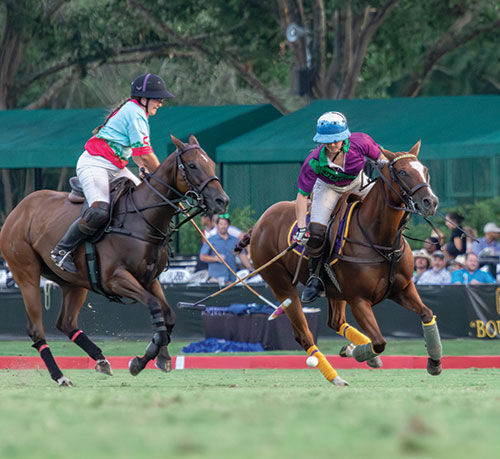
Photo courtesy of US Polo Association
For many players, learning to play under pressure, working with nerves and displaying maturity in front of the polo community has led to amazing opportunities. Juniors like Naomi Tachibana Marlough and Hanan Fadil, for example, demonstrated integrity and good character, landing them spots on the La Fe team in the U.S. Open Women’s Polo Championship last spring in Florida.
Perhaps one of the most special parts of NYTS is watching the juniors’ life stories unfold over the years. As younger players first start out in the program, they may struggle with being the weakest player on a team, but as they get older and move up in the program, they eventually become leaders, helping teach the next group coming in.
“It’s inspiring to be surrounded by people who can take constructive criticism and turn it into positive action,” Supik said. Supik has first-hand knowledge, having competed in interscholastic polo. She was part of the first all female team to win the Open National Interscholastic Championship in 1998 when she was playing for the Garrison Forest School team. She lights up thinking about how far girls’ polo has come since her victory.
She identifies a short list of female players who have acted as trailblazers, making the sport more accessible and welcoming to young girls: Sunset “Sunny” Hale, Hope Arellano, Hazel Jackson, Kelly Wells, etc. Supik said, “They’re not just talented women who blazed the trail by being successful in their own, personal polo careers, they want to and are giving back to younger girls. That’s the diesel power to it.”
The USPA’s Junior Committee, NYTS subcommittee, and Young Player Opportunity subcommittee meet regularly to discuss current and future opportunities for junior players. Much of that discussion revolves around training availability in the U.S. and Argentina, as well as the best ways to support player advancement. With a lot of crossover between NYTS and I/I tournament managers, USPA staff is able to keep a pulse on trends and challenges in the youth polo space. Youth polo remains strong in the U.S. and the USPA looks forward to continuing and advancing developmental programs for young players.
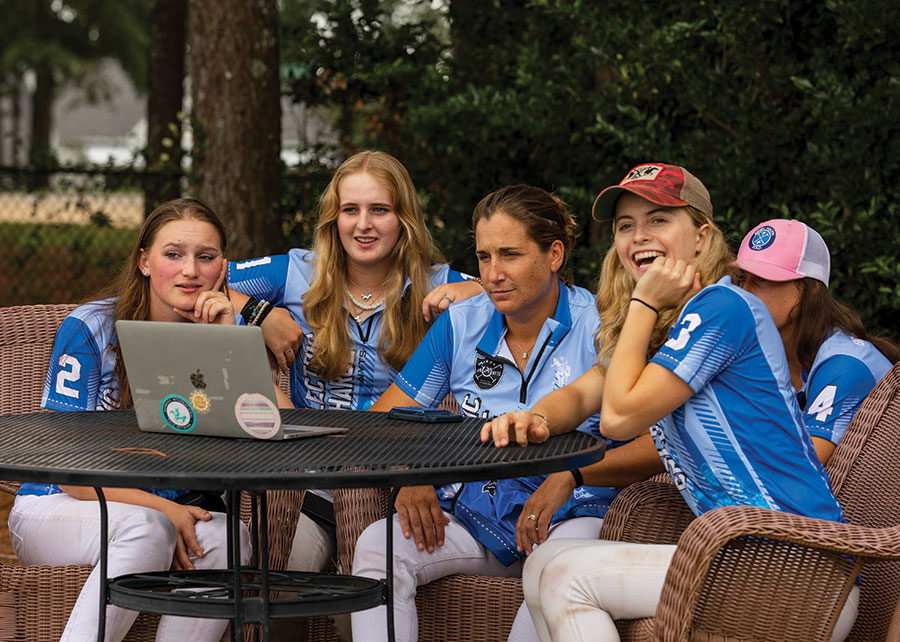
Photo courtesy of US Polo Association
This article is reprinted with permission from Polo Magazine ©.
You can find more interesting articles in our section on Health & Education and Riding Disciplines.
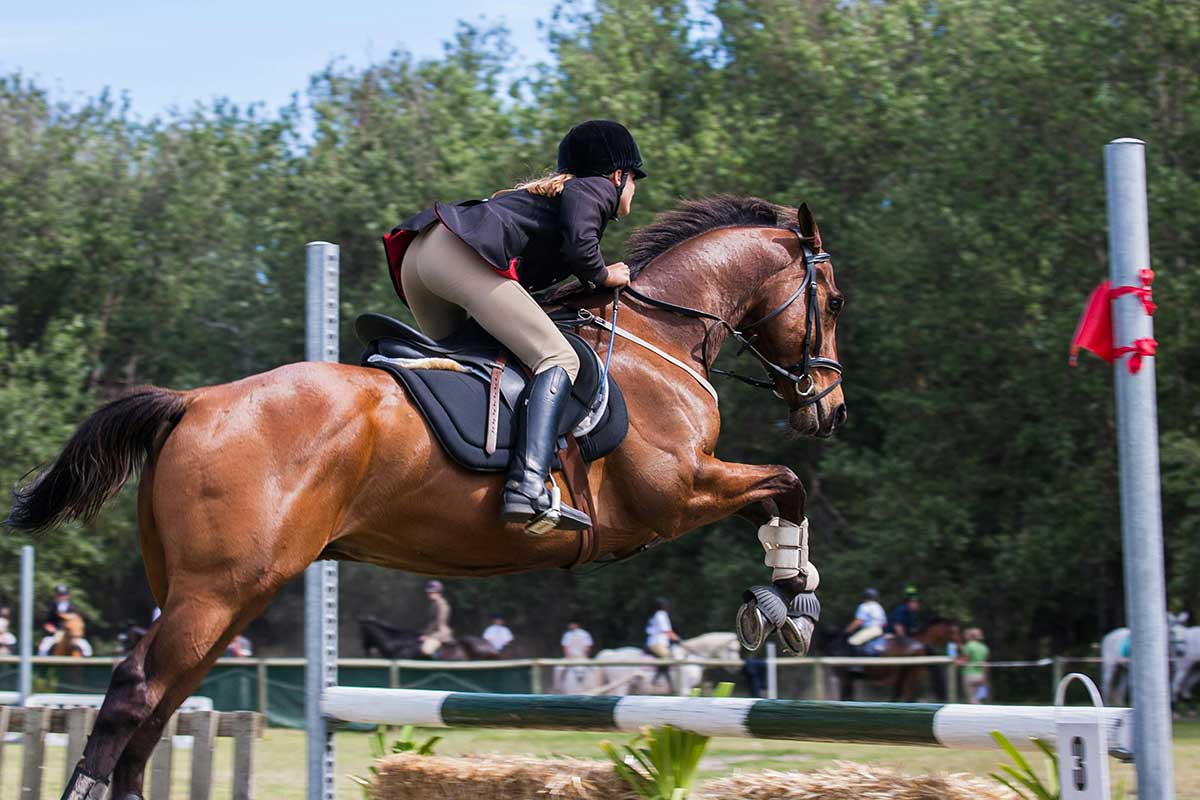
You've watched cartoons about horses as a kid, read books about these beautiful creatures, and dreamed that one day… What? Why has that day still not come? Maybe horses no longer inspire you. But more likely you just don’t know where to start. You’re not a kid anymore, which means you have a bunch of important business to take care of. What you don’t have is time and money for unusual hobbies. Nevertheless, let’s take a look at the most promising opportunities to learn horseback riding in the US. If you have been waiting for a sign this may be it!
Aloha Riding Lessons
Already sounds interesting, right? Here professionals combine riding and horsemanship lessons according to the highest standards. Such an approach helps them keep learners safe and provide horses with the best-quality care. If you have already set riding goals, this place is a perfect choice. Simultaneously, joining the community may help you realize what you truly enjoy. ARL has a wide range of students, which means you won’t feel uncomfortable as a beginner. Experts also come here to train and improve their skills for showing or college.
Even if your mind is set on competition, you can’t skip the part with horse care and managing. Everybody must learn the basics to go on, and this is for the best! You’ll gain invaluable experience learning how to care for your horses, which can be a bit more sophisticated than exploring how to make a reflection paper in college, for example. And, of course, besides being an endless inspiration source, working with horses can become a great meditation opportunity. Here, you can leave your routine worries behind and live in a beautiful moment.
ARL tries hard to combine standard practices with an individual approach. Daily instruction, clinics, and camps are meant to cover horsemanship as a whole, without leaving any nuances without attention. You can visit their website to discover more details, book services, or ask questions in a chat. The services include evaluation lessons, fall break camps, family classes, and monthly riding lesson subscriptions. Situated inside the Koko Crater and Botanical Gardens, ARL provides first-class facilities for students of all levels.
Traditional Equitation School
Our next destination is located at the Los Angeles Equestrian Center. Established in 1981, this is the oldest riding school in this area. Like Aloha Riding Lessons, Traditional Equitation School offers a wide range of services for learners of all levels. Let’s examine some points in detail.
- TES organizes private and group lessons. You’ll deal with well-trained school horses either way.
- TES Horse Camp is available to children ages 6-12 during school breaks. This is a perfect opportunity to move from studies to active rest.
- Children also can enjoy a birthday party at the same location.
- Special attention deserves a Girl Scout and Boy Scout badge program. During two hours scouts can grasp the basics of horseback riding, safety, equipment, and barn chores.
- TEAM TES is an initiative allowing students to compete against other riding schools even if they don’t own a horse.
- Nevertheless, some trained horses are for sale.
- You can contact TES if you already own a horse but require additional guidance. Here you can get full-service horse care, including feeding and exercising.
TES provides helpful videos for those willing to repeat the theory. They also cover most of the controversial points in the FAQ section. For instance, the school clarifies the location, reminds learners of the need for reservation, and reassures them that riding experience is not necessary. Restrictions exist: riders must be at least 4 years old. TES explains the weight limit and the regulations regarding clothes. All learners must wear helmets even if they are interested only in having fun. Remarkably, TES trained several actors who had to deal with horses in their shows.
Working with horses is definitely not a cheap hobby. TES explains this point further by stating that keeping horses in a city is highly challenging. The school has monthly expenses that cover rent, vet care, grooming, supplements, and all types of equipment. It doesn’t work on Mondays to let horses rest after the busy weekends. After all, the well-being of horses and learners is the school’s priority.
California Riding Academy
Last but not least, this school provides the same services as our previous picks. However, its website immediately grasps visitors’ attention with a section that encourages newbies to meet horses. “We love horses, and we treat them with great care. We welcome you to visit them”. Here, you can click on photos of Lady Godiva, Humphrey Bogart, and other horses and ponies that make California Riding Academy such an exciting place. At first sight, there’s nothing revolutionary about creating such a section. However, it demonstrates that CRA highly values a personalized approach. Every horse and every rider are equally special. Success is a result of their common effort and dedication.
Wrapping up
Already feel inspired to turn your dream into reality? That requires extra effort and resources. However, as you see, you can tailor horseback riding training according to your current abilities and objectives. This can be a one-time experience just for fun. You can also join a school and try competing with others. Multiple initiatives will welcome you even if you don’t own a horse. So set your goals, join the community, and find inspiration in a pretty unusual hobby!
There are more informative articles in our section on Riding Disciplines.
- Las Pampas Ponies - Argentine stud farm bred smaller polo Thoroughbreds
- If You Build It, They Will Jump…!
- Horse Racing: The Best Jockeys in Australia
- Best of the Bunch
- Para Dressage In Tokyo: USA Takes The Podium
- StreamHorseTV’s Tokyo Takeaways, Presented by Haygain
- Olympians Music is Elevating Entertainment Value in Dressage
- Tokyo Olympics: Dutton’s Diaries
- Olympia London International Horse Show
- Paperless Scoring Has Arrived
- Horse Trainer Carly Ramsey Finds Success in Wildly Different Equestrian Disciplines
- Escondido Girl, 12, a World Champion Equestrian
- "You just keep going" 11-Year-Old Becomes Cutting Horse World Title Holder
- My Horse Accepts Me, So the Rest of the World Can, Too
- Gonza Pieres talks horses: “I am intrigued by each player’s best horses”
- 10 Tips for Returning to Horseback Riding
- A History of the Florida Cracker Cowboys
- Prescott Frontier Days 2019: World’s Oldest Rodeo
- Can We Ride for the Fun of It? - Excerpt from "Dressage for No Country"
- Archaic Middle Eastern Variations of Polo







